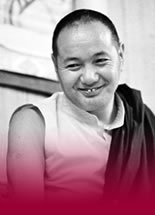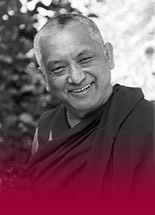Robina’s Blog
23 February, 2023
We know that the Buddhist approach is that we can change our attitude towards something in the outside world, but we often don’t think that when it comes to experiences of pain, let’s say.
We just assume if we’ve got a headache, “Of course I’m angry, of course I’m upset.” But there are two things happening in the mind: one is sensory and one is mental. We mightn’t be able to make the headache go away, but we can learn to work on the attitude towards it.
I mean, it’s totally natural for us to immediately resist the pain, to not want it, to wish it would go away, because we’ve all got attachment—and when attachment doesn’t get what it wants, anger is the automatic response. So it’s not an easy practice; it takes time.
We need to look at this carefully, because we completely conflate the pain and the anger. But they really are different parts of our mind.
The bodhisattvas are such outrageous examples of this. They not only don’t get angry, they actually welcome the pain because it’s an opportunity to increase their compassion.
That’s intense! Even if we can’t do that yet, we can at least see that our response is in our hands, that we can learn to lessen the anger. Anger has a huge quality of resistance – we cannot stand the pain, we desperately wish it would go away, and much of our misery is coming from this.
I remember vividly a story Kirti Tsenshab Rinpoche told about one particular bodhisattva for whom the action of “cutting off their hand and feeding it to a starving animal is as inconsequential as a leaf falling off a tree.” I’ll never forget!
What’s happening here is that their compassion was so huge it dominated their mind and they were overwhelmed with the wish to alleviate the suffering of the animal.
Physical pain is real, but it’s our interpretation of it that determines the degree of our suffering; that’s the point. That bodhisattva’s hand was cut off, fact. But the compassion predominated.
Even if we can’t imagine this, we can clearly see that there are two things going on: the sensory experience of a severed hand and the compassion for the starving animal.
I remember watching a television program years ago about the outrageous things mothers would do to save their children: one mother ran into a burning house; another lifted up a car. And we hear plenty about the pain people can happily endure in the pursuit of their goal, such as a sport.
If we’re not yet capable of actually feeling compassion when we have pain – or, of course, when anything bad happens – we can at least see the simple advantage to ourselves of changing our interpretation of the pain: we suffer less.

